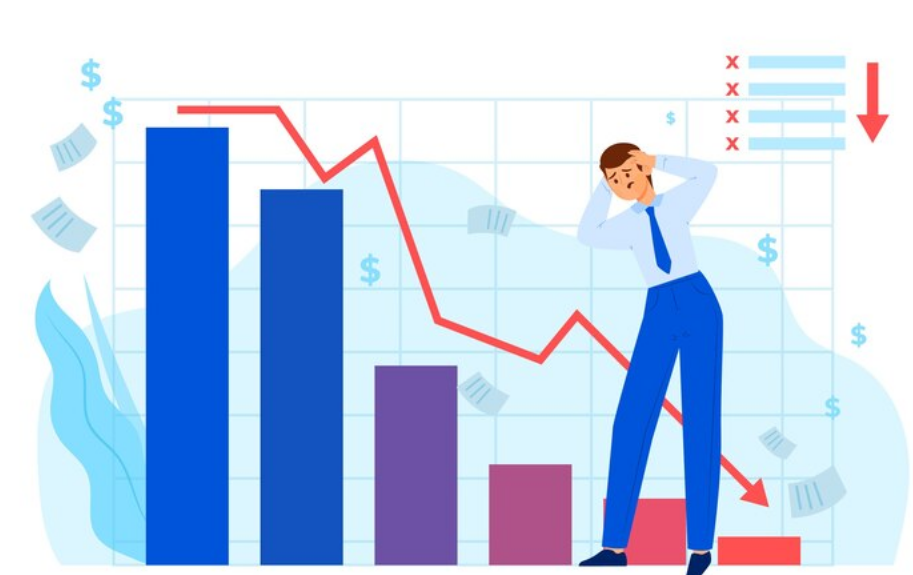Psychological price points play a crucial role in cryptocurrency trading, as traders often make emotional decisions near integer price points, forming significant support and resistance zones. The reactions at these points can influence market volatility and price trends.
Author: Abdulafeez Olaitan
Translation: Blockchain in Plain Language

In cryptocurrency trading, psychological price points have a profound impact on market behavior, influencing everything from price fluctuations to trading decisions. In fact, studies show that over 70% of traders tend to place large buy or sell orders near integer price points such as $10,000 or $50,000, thereby creating strong support and resistance ranges.
These psychological points reflect collective sentiment, serving as focal points where fear, greed, and hope intertwine, driving the development of market trends. Understanding how these points affect the cryptocurrency market can provide you with a strategic advantage in predicting price changes and optimizing trading strategies.
Key Points
Psychological price points are critical price levels, often integers, that serve as important support and resistance areas in cryptocurrency trading.
Traders often exhibit emotional reactions as they approach psychological price points, leading to increased volatility.
Successful trading around psychological price points requires a combination of technical analysis and fundamental factors to enhance trading effectiveness.
Institutional traders and market makers often manipulate price movements using psychological price points.
1. Psychological Price Points in Cryptocurrency Trading

1) Psychological Price Points
Psychological price points, also known as psychological thresholds, are price levels in financial markets (especially in cryptocurrency trading) where traders' behavior is significantly influenced by emotions, cognition, and collective psychology.
These points typically correspond to integers or milestone prices, such as $10,000 or $50,000, which naturally attract a lot of market activity.
Integers like $100, $1,000, or $10,000 are considered psychological price points because they are prominent and easy to remember. These numbers become important reference points, and market participants are more likely to enter or exit trades at these levels, forming strong support or resistance.
2) Examples of Key Integer Prices:
Bitcoin (BTC): $10,000, $20,000, $50,000
Ethereum (ETH): $1,000, $2,000, $5,000
Ripple (XRP): $0.50, $1.00, $1.50
Litecoin (LTC): $100, $200, $300
Integer prices have psychological appeal because they simplify trading decisions, and both novice traders and experienced investors tend to rely on these points. These price points become psychological anchors, where significant trading volume often accumulates.
Psychological price points reflect collective market sentiment and become self-fulfilling prophecies as more traders place orders at these levels. Due to the simplicity of integer prices, traders often rely too heavily on them, making them important psychological barriers.
Market reactions to psychological price points are driven by emotions, creating cycles of buying and selling around these price levels. Traders' perceptions of value, fear of losses, and desire for profits further amplify the significance of psychological price points.
The herd effect is also a major factor influencing psychological price points, as traders tend to follow the behavior of the majority. Especially near key psychological thresholds, when a large number of traders expect a price reversal or breakout, others will follow suit, accelerating price volatility.
Emotions (such as fear and greed) play a key role in market behavior near psychological price points. Fear may lead traders to sell prematurely near psychological resistance, while greed may prompt traders to chase prices near psychological support, often triggering exaggerated market reactions in these key areas.
"Psychological price points are not just numbers; they embody the collective emotions of traders and often become critical points for market reversals or breakouts."

2. How Psychological Price Points Affect the Cryptocurrency Market
Here are ways psychological price points impact the cryptocurrency market:
1) Key Support and Resistance Areas
Psychological price points often coincide with key support and resistance areas in the cryptocurrency market. In these areas, prices tend to stall or reverse as market participants make trading decisions based on integer prices.
Support levels are price points where buying pressure is sufficient to prevent further price declines. Psychological thresholds like Bitcoin's $10,000 or Ethereum's $1,000 often naturally serve as support levels. When prices approach these levels, traders expect more buying activity, believing that prices are unlikely to fall below these points.
Resistance levels are price points where selling pressure is sufficient to prevent further price increases. Psychological thresholds like Bitcoin's $20,000 or $50,000 often become resistance levels. You may find that prices encounter resistance when breaking through these points, as many choose to sell at these integer prices, anticipating a price reversal.
Related Reading: [How Crypto Investment Affects Your Mental State]
2) Price Accumulation Near Psychological Price Points
Price accumulation refers to the phenomenon where market prices fluctuate around certain psychological price points for extended periods. This behavior reflects traders' collective focus on integer prices, with many setting buy or sell orders near these levels.
Market reactions near psychological price points are often swift and intense. When prices approach psychological thresholds, trading volume typically surges as traders rush to buy or sell. This reaction can trigger short-term volatility, with prices changing rapidly to align with market sentiment.
Due to increased market activity, volatility near psychological price points tends to rise. Traders tend to place large orders at these integer prices, which can lead to rapid price fluctuations. When prices break above or below psychological thresholds, changes in market sentiment can trigger even greater volatility, with traders often reacting emotionally to these shifts.
3) Liquidity and Trading Volume at Psychological Price Points
There is often a significant accumulation of liquidity and trading volume near psychological price points, leading to notable volatility when prices approach or break through these thresholds. Your actions at these levels can significantly influence price movements.
Order books often show clusters of buy or sell orders near psychological price points. Large orders typically pile up around integer prices, reflecting a consensus of strong market reactions to these levels. This clustering of orders affects the depth and liquidity of the order book, leading to rapid price changes when testing these thresholds.
Traders' psychology directly impacts the liquidity of psychological price points. When you develop emotional reliance on certain price points, you are likely to place larger orders near these thresholds, thereby increasing liquidity. However, once these thresholds are quickly breached, it can lead to liquidity gaps—where buyers or sellers suddenly withdraw, causing prices to spike or plummet.
"Traders' emotional reactions near psychological price points can trigger significant volatility, making it crucial for traders to understand how market sentiment influences price movements."
3. Trading Strategies Around Psychological Price Points

Here are some strategies for trading around psychological price points:
1) Support and Resistance Trading Strategy
The support and resistance strategy is a common method for trading around psychological price points. Through these strategies, you can identify potential price reversals or continuations, allowing for more effective market entry and exit.
Psychological price points can be used to determine buy and sell levels. For example, Bitcoin's $10,000 or Ethereum's $1,000 are typically areas of support (where prices stop falling) or resistance (where prices struggle to rise). Here are specific actions:
Buy: Enter a buy position near psychological support when expecting prices to rebound from that level.
- Sell: Enter a sell position near psychological resistance when expecting prices to retreat or stall at that level.
By strategically setting stop-loss and take-profit orders, you can better manage risk and lock in profits:
Stop-Loss Setting: Set stop-loss orders slightly below psychological support or slightly above resistance. This helps avoid losses from false breakouts while preventing premature exits from trades.
- Take-Profit Setting: Set take-profit orders slightly below psychological resistance to lock in profits before potential reversals or stalls.
2) Utilizing Psychological Price Points for Trend Trading
In trend trading, psychological price points can be combined with trend lines and technical analysis to enhance trading strategies. These points often serve as key points for trend pauses or accelerations.
When a strong trend aligns with psychological price points, these areas can serve as additional confirmation signals:
Uptrend: Watch for price rebounds at psychological support to confirm the continuation of the trend.
- Downtrend: In a downtrend, psychological resistance levels often indicate that sellers may re-enter the market.
Breakouts and false breakouts are important concepts in trend trading:
Trade Breakouts: Enter a position when prices strongly break through psychological price points, indicating that the trend may continue.
Manage False Breakouts: Be cautious of false breakouts near psychological price points by waiting for increased volume or longer candlestick patterns for confirmation. These are often triggered by emotional trading.
3) Risk Management Strategies
Trading around psychological price points can lead to significant volatility, making risk management crucial. Employing sound strategies can reduce risk exposure.
Psychological price points can serve as benchmark points for risk control:
Support Risk Control: Buying near psychological support levels allows you to set stop-loss orders below these points, thereby reducing the risk from unexpected market fluctuations.
Resistance Risk Control: Selling or shorting near psychological resistance levels can help reduce risk exposure in case of price reversals.
Position size management is also vital for controlling overall risk, and psychological price points can help define capital allocation ratios:
Larger Positions: When price fluctuations near psychological points align with broader trends, consider larger positions to capitalize on the trend's continuation.
Smaller Positions: In high volatility or uncertain markets, use smaller position sizes when close to psychological price points to manage unpredictable price movements.
"Combining psychological price points with traditional technical analysis and fundamental insights can create a more comprehensive trading strategy, thereby increasing the likelihood of success."
4. Tools for Identifying Psychological Price Points in Cryptocurrency Charts
Here are some tools that can help identify psychological thresholds in cryptocurrency charts:
1) Trading Platforms and Technical Indicators
Many trading platforms and technical indicators can assist traders in easily identifying psychological price points in cryptocurrency charts, providing visual cues to anticipate market behavior near these key points.
Most trading platforms (like TradingView, BN, and MetaTrader) allow users to manually mark psychological price points on charts. Common drawing tools include:
Horizontal Lines: You can manually draw horizontal lines at key psychological points (like $1,000, $5,000, or $50,000) to clearly mark these support or resistance levels.
Price Alerts: By setting price alerts at psychological points, you can receive notifications when prices approach these important areas, allowing for quick reactions.
Some technical indicators are specifically designed to automatically mark round numbers or psychological points, providing additional analytical support:
Round Number Indicators: These indicators specifically mark common round numbers, allowing you to easily identify psychological price points without manual intervention.
Pivot Point Indicators: Pivot points often coincide with psychological price points, providing a comprehensive view of technical and psychological support/resistance levels.
2) Combining Fibonacci with Psychological Points
Fibonacci retracement is a commonly used tool for identifying potential support and resistance points based on historical price fluctuations. When used in conjunction with psychological price points, it can provide a more comprehensive analysis of market behavior.
Fibonacci retracement levels (like 38.2%, 50%, and 61.8%) often align closely with psychological price levels, reinforcing the significance of these price points. For example:
Bitcoin: The 61.8% Fibonacci level may coincide with a psychological point like $30,000, forming stronger support or resistance.
Ethereum: The Fibonacci retracement level near $2,000 may align perfectly with a psychological resistance level, further emphasizing the importance of that price point.
Using Fibonacci retracement in conjunction with psychological price points can help you more accurately identify price levels of market interest:
Entry and Exit Strategies: Look for optimal buying and selling opportunities based on whether Fibonacci retracement and psychological points align. When both indicate a specific price level, the likelihood of market reaction increases.
Risk Management: Setting stop-loss orders at the intersection of Fibonacci and psychological points can help better control risk, as these areas typically have stronger liquidity and more pronounced market reactions.
"Institutional traders often use psychological price points to trigger stop-loss orders and create false breakouts, misleading unprepared retail traders."
3) Common Mistakes When Trading Psychological Price Points

5. Common Mistakes When Trading at Psychological Price Points
Trading at psychological points like round numbers can be very useful, but many traders make mistakes that lead to poor decisions. Let's look at some common mistakes and how to avoid them.
1) Over-Reliance on Round Numbers
Psychological points, such as prices ending in .00 (e.g., $50.00 or $100.00), do influence the market, but over-relying on these round numbers can be counterproductive. Here’s how to avoid this:
Don’t trade solely based on round numbers. While round numbers may seem like strong support or resistance levels, prices are often influenced by other factors, such as economic news or technical indicators. For example, if you only focus on $100.00 as a key price level for a stock, you might miss opportunities for price fluctuations due to new earnings report data.
Additionally, be wary of false breakouts. Suppose you are waiting for a stock to break above $50.00, believing the price will continue to rise, but if you overlook other signals, such as low trading volume or lack of news, you may fall into the trap of a false breakout—where the price temporarily breaks above $50.00 and then quickly falls back. This can lead to mistimed trades and losses.
2) Misinterpreting Market Sentiment
Emotions like fear and greed often influence traders' decisions near psychological points, leading to impulsive trading. Here’s how to stay rational:
Avoid missing out on fear (FOMO). Suppose Bitcoin is nearing $30,000, and you decide to buy just because everyone is talking about it. You fear missing out on a big rise, but without thorough analysis, you might enter at the wrong time. Wait for clear signals, such as price trends or trading volume, before taking action.
Also, don’t panic sell during downturns. If a stock falls below a psychological support level (e.g., $50.00), many traders panic sell out of fear that the price will continue to drop. However, the market may just be temporarily adjusting. First, analyze the situation and look at the broader trend or news to avoid unnecessary losses.
3) Ignoring Market Manipulation
Large traders, often referred to as "whales," may manipulate prices near key psychological points. To avoid falling into these strategies, stay alert and watch for the following common tactics:
Be wary of stop-loss hunting. Whales may intentionally push prices down to key levels (like below $100.00) to trigger stop-loss orders, forcing retail traders to sell. Subsequently, whales can buy at lower prices. To avoid this, set stop-loss orders slightly above or below these significant price levels to reduce the chance of being targeted.
Don’t trust every breakout. Whales or market makers can push prices up to resistance levels (like $50.00), making it look like a breakout, but they may quickly sell after retail traders enter. Before entering a trade, confirm whether the breakout signal is reliable, which can be validated through other indicators like a surge in trading volume or news events.
4) Overtrading Near Psychological Points
When prices approach psychological points, it’s easy to tempt traders into overtrading, trying to capture every small fluctuation. This can lead to the following issues:
Chasing small, unnecessary profits. Constantly trading during minor price fluctuations can lead to high trading costs and stress. For example, buying and selling every time a stock nears $100.00 can erode your profits with fees without yielding substantial gains.
Missing larger trends. Focusing too much on small fluctuations near round numbers may cause you to overlook larger trends. You might become overly fixated on a stock at $50.00 while missing the overall trend rising to $60.00. Keep an eye on long-term patterns.
6. Conclusion
In cryptocurrency trading, psychological price points play an important role in shaping market behavior, often serving as key points for support, resistance, and decision-making. These points typically manifest as round numbers and significantly influence traders' emotions, especially in volatile markets.
7. Frequently Asked Questions
However, while psychological points can provide valuable insights, you must avoid over-relying on them. Combine them with other technical indicators, fundamental analysis, and risk management strategies to improve your trading success rate.
1) What are psychological price points in cryptocurrency trading? Psychological price points are key price levels, often represented as round numbers, that traders believe may serve as support or resistance. These points are important because many market participants tend to place buy or sell orders near these numbers, leading to increased trading activity.
2) How do round numbers affect trading decisions in the cryptocurrency market? Round numbers are often focal points of trader sentiment. When prices approach these numbers, traders may anticipate a rebound (support) or reversal (resistance), influencing their trading decisions regarding entry and exit timing.
3) Why are psychological price points important in cryptocurrency trading? Psychological price points are crucial because they help traders identify areas where prices may change direction. They provide insights into market psychology, enabling traders to make more informed decisions based on the expected reactions of other market participants.
4) How do psychological price points differ from traditional technical analysis? Traditional technical analysis relies on indicators and chart patterns to identify price movements, while psychological price points focus on behavioral trends of traders near round numbers. Psychological price points reflect collective market sentiment, whereas traditional analysis is more quantitative.
5) Can psychological price points predict trends in the cryptocurrency market? Yes. Psychological price points can indicate potential trends by highlighting areas of interest for buyers and sellers. However, they are not infallible market trend prediction tools, as external factors like news events and broader market conditions also play significant roles.
Article link: https://www.hellobtc.com/kp/du/12/5595.html
Source: https://blog.ueex.com/psychological-levels-in-cryptocurrency-trading/
免责声明:本文章仅代表作者个人观点,不代表本平台的立场和观点。本文章仅供信息分享,不构成对任何人的任何投资建议。用户与作者之间的任何争议,与本平台无关。如网页中刊载的文章或图片涉及侵权,请提供相关的权利证明和身份证明发送邮件到support@aicoin.com,本平台相关工作人员将会进行核查。




